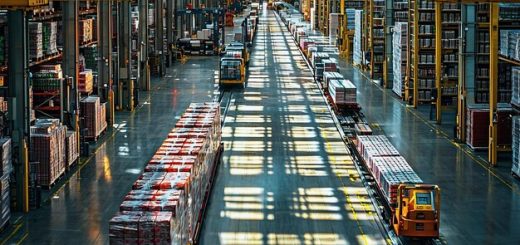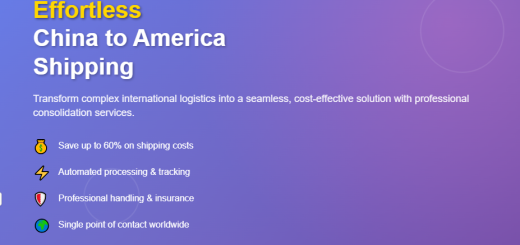British Columbia Outdoor Enthusiasts: Consolidate Chinese Camping Gear & Apparel Affordably in 2025
Introduction
For British Columbia outdoor enthusiasts, importing camping gear and apparel from China offers access to high-quality, budget-friendly products for hiking, skiing, and backcountry adventures. However, shipping multiple small orders individually can lead to high logistics costs, delayed deliveries, and customs complications. Package consolidation—combining multiple small shipments into a single batch—is a cost-effective solution to reduce expenses, speed up delivery, and ensure compliance with 2025 regulations.
This guide reveals how BC residents and outdoor retailers can leverage LCL (Less Than Container Load) shipping, optimize packaging for rugged outdoor gear, and navigate supply chain trends to streamline their imports. Whether you’re sourcing tents, sleeping bags, winter jackets, or trail running shoes, this article provides actionable strategies to avoid pitfalls and maximize savings.
Why Consolidation Works for BC Outdoor Enthusiasts
1. Cost Savings for Small-Batch Orders
- LCL Shipping: Ideal for individuals or small businesses importing 1–10 CBM of goods (e.g., tents, backpacks, clothing).
- Example Pricing:
- China–Vancouver LCL: 85–85–150/CBM (via Vancouver port).
- China–Whistler LCL: 90–90–160/CBM (via Halifax port).
- Benefits:
- Lower upfront costs for multiple small orders (e.g., 3 CBM of tents + 2 CBM of winter apparel).
- Flexible delivery schedules to meet seasonal demands (e.g., summer hiking gear, winter sports season).
2. Access to Affordable Chinese Outdoor Gear
- Popular Items for BC Enthusiasts:
- Camping Gear: Tents (50–50–300/unit), sleeping bags (40–40–200/unit), and camp stoves (20–20–150/unit).
- Apparel: Winter jackets (80–80–300/unit), hiking boots (60–60–250/pair), and trail running shoes (50–50–180/unit).
- Accessories: Headlamps (10–10–60/unit), first aid kits (20–20–100/unit), and water filters (15–15–80/unit).
- Why Choose China?:
- Mass production: Access to high-quality, low-cost goods with innovative designs.
- Customization options: Branded packaging, bulk discounts, or prototype testing.
3. BC Market Needs Consolidation
- High Demand for Niche Products: BC’s mountainous terrain and extreme weather drive strong demand for specialized outdoor gear.
- Local Challenges:
- Expensive imports for rare items (e.g., technical climbing gear, eco-friendly apparel).
- Long lead times for small orders or custom bundles.
- Consolidation Solves These Issues:
- Combine small orders to reduce per-unit costs.
- Faster delivery via direct China–Vancouver routes.
Common Challenges and How to Avoid Risks
1. Risks to Watch For
- Damage During Transit:
- Fragile items (e.g., delicate fabrics, glass lanterns) risk breakage or contamination.
- Theft or Loss:
- Small packages are more vulnerable to misrouting or theft.
- Customs Delays:
- Strict documentation for prohibited items or regulated chemicals.
- Hidden Fees:
- Port congestion charges, storage fees, or customs brokerage costs.
2. Why These Risks Happen
- Supply Chain Complexity: Multiple intermediaries (e.g., freight forwarders, customs brokers) increase handling risks.
- Regulatory Compliance: Changing tariffs and documentation requirements for prohibited items.
- Market Volatility: Container shortages or port congestion lead to emergency delays.
Strategies for Affordable Consolidation of Outdoor Gear Imports
1. Choose a Secure Logistics Partner
- Verify Handling Protocols:
- Ask for itemized quotes (e.g., freight cost, insurance, handling fees).
- Prioritize providers with climate-controlled storage and anti-theft measures.
- Leverage Technology:
- Use platforms like Flexport or DB Schenker for real-time tracking.
- Blockchain-based invoices (e.g., IBM TradeLens) to audit handling.
2. Optimize Packaging for Rugged Goods
| Item Type | Packaging Strategy | Cost Impact |
|---|---|---|
| Tents | Foam padding + reinforced plastic crates | 15–15–40/unit |
| Sleeping Bags | Vacuum-sealed bags + moisture-resistant cartons | 10–10–30/unit |
| Hiking Boots | Individual blister packs + anti-static liners | 5–5–20/pair |
- When to Choose LCL:
- Mixed Cargo: E.g., 4 CBM of tents + 3 CBM of winter apparel.
- Budget Constraints: Perfect for individuals or small businesses.
- When to Choose FCL:
- High-Value, Single-Type Goods: E.g., 10 CBM of technical climbing gear.
- Time-Critical Deliveries: Needed for seasonal campaigns.
3. Leverage Free Trade Zones and Duty-Free Thresholds
- Free Zones for Cost Savings:
- Vancouver Free Zone: $5/day storage for up to 90 days.
- Duty-Free Thresholds:
- Canada: $1,600 threshold for personal imports (e.g., individuals, gifts).
- Use CETA/CCFTA Tariff Reductions:
- 0% tariffs on textile components, wood-based goods, and outdoor equipment.
4. Optimize Documentation for Customs Compliance
- Essential Documents:
- Authentication Certificates: From recognized industry associations (e.g., Canadian Outdoor Industry Association).
- Export Licenses: For prohibited items or regulated chemicals.
- Valuation Reports: To avoid overvaluation penalties.
Case Studies: BC Outdoor Enthusiasts Save with Consolidation
Case Study 1: Tents for a Vancouver Hiking Group
- Challenge: Unexpected port fees increased total costs by 25%.
- Solution:
- Partnered with Flexport for itemized cost tracking.
- Opted for LCL to avoid FCL surcharges.
- Outcome: Saved $3,000 on a 5 CBM shipment of backpacking tents.
Case Study 2: Winter Apparel for a Whistler Retailer
- Challenge: Hidden customs brokerage fees added $2,000 to the bill.
- Solution:
- Used DPD’s transparent customs service with flat-rate fees.
- Consolidated 3 small orders into one LCL shipment.
- Outcome: Reduced total costs by 35%.
2025 Trends in Affordable Consolidation for Outdoor Gear Imports
- AI-Driven Risk Assessment
- Flexport’s AI Risk Engine: Predicts handling risks based on item type, route, and seasonality.
- Blockchain for Authenticity Verification
- Immutable certificates (e.g., IBM TradeLens) to verify provenance.
- Climate-Controlled Logistics
- Temperature-regulated containers to protect fragile goods.
- Smart Contracts for Secure Agreements
- Automated agreements to lock in handling protocols and prevent last-minute changes.
Common Mistakes to Avoid
| Mistake | Solution |
|---|---|
| Overpacking Boxes | Use standard-sized cartons (e.g., 40cm x 30cm x 20cm). |
| Ignoring Climate Control | Opt for climate-controlled containers for delicate components. |
| Skipping Insurance | Always purchase All Risks coverage for valuable items. |
| Missing Authentication Docs | Print ISO-standard certificates in English. |
| Neglecting Customs Compliance | Work with local customs brokers (e.g., UPS Trade Compliance). |
Conclusion
For British Columbia outdoor enthusiasts, affordable consolidation of Chinese camping gear and apparel is a critical advantage in reducing costs, protecting inventory, and expanding access to global products. By choosing reliable logistics partners, optimizing packaging strategies, and leveraging 2025 technologies, you can avoid hidden fees, ensure safe delivery, and comply with regulations.
Take Action Now:
- For 2025 shipments: Start auditing your logistics providers by October 2025.
- Partner with secure platforms like Flexport or DB Schenker to cut costs and meet compliance goals.


